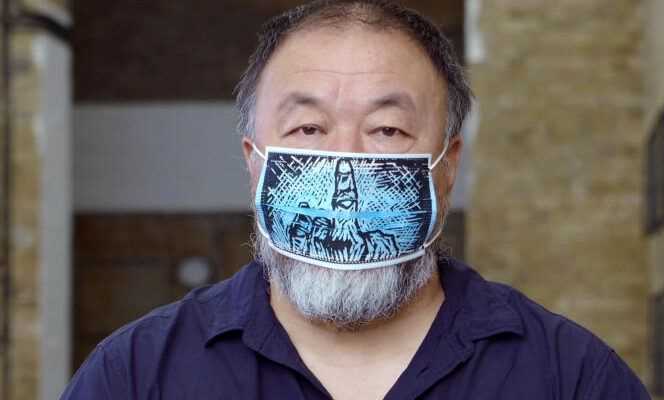ARTE – WEDNESDAY, JUNE 2 AT 10:25 PM – DOCUMENTARY
In a documentary in three parts of 55 minutes, each programmed on Arte from Wednesday June 2, the German directors Nicola Graef and Jörg Jung question the relationship between art and society through three angles: “Power and politics”, “Faith and religion ”,“ Feminism and gender ”. Well-known artists, such as Ai Weiwei, once darling of the Beijing regime before having the misfortune or the courage to highlight the flaws of the government in the treatment of a crisis caused by a deadly earthquake, are solicited there. Arrested, then forced into exile, he now uses his notoriety to denounce, in particular, the fate of migrants.
Others, like Santiago Sierra, have long been surrounded by the scent of scandal. He, for example, hired people in the United States whose job it was to support sculptures on their shoulders. They were therefore paid at minimum wage: the candidates were mostly homeless, mostly black, a way for the artist to denounce the pauperization of African-Americans.
More radical still was its installation, in a German synagogue, of a gas chamber which one visited equipped with an oxygen mask. The Jewish community was moved by it, obtaining the closure after two days. Artist’s comment: “A subject of such gravity, the death of 6 million Jews, needs to be treated with an intensity that is just as unbearable …”
“Can we still talk about art? “, quite rightly ask the documentary filmmakers. If, according to a philosophical definition, art is what gives worlds to think about, the answer may be yes. Especially since these performances are relayed by institutions designed for exhibitions. This is also what strikes an environmental activist, who came to an art center to recover, at the invitation of the artist Andrea Bowers, material intended to occupy a forest promised to total clearing: “Exhibiting them in a museum makes them sterile”, she says.
Immensity of the subject
Entitled When art disturbs, the documentary suffers from the immensity of its subject. He could have made history, but it is very long: the first table of opposition to a political regime is The Raft of the Medusa, by Géricault, exhibited in 1819! Even by focusing on the most recent events, the field remains too vast and the effectiveness of the films suffers. Russia alone would have deserved some attention, if only to show that art politically engaged against power was not born with the Pussy Riot, but is part of a long tradition.
Of course, documentaries do not make a clean sweep of the past, some historical figures are mentioned, such as Joseph Beuys and especially the venerable Hermann Nitsch, 82, co-founder of Viennese actionism, whose disgusting bloody performances we will taste – or vomit. .
Still, the news is responsible for reminding that these artists risk paying dearly for their commitment. After their spectacular and sacrilegious action in 2012 in the Cathedral of Christ the Savior in Russia, the Pussy Riot were sentenced to two years in prison. And one of them, Veronika Nikoulchina, has just been arrested again on May 7 in Moscow. She did nothing in particular, but there were concerns that she would try to disrupt the military ceremonies on May 9. The commentary of one of his former companions therefore takes on its full meaning here: “In the face of weapons, there is not much we can do. But this little thing is interesting! “
When art disturbs, documentary by Nicola Graef and Jörg Jung (Germany, 2020, 3 × 55 min). Available on Arte.tv, until 1er July.
